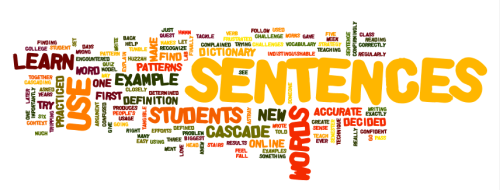Over the years of teaching vocabulary to college students, one of the biggest challenges is trying to explain exactly why their sentences are wrong when they try to use new words. The dictionary definition makes sense in the context of their sentences, but the sentences are just … not right. This fall I finally decided to tackle the problem head on. We had encountered the word cascade in something we were reading, and no one knew it so I gave them the definition. In a quiz a few days later I asked them to create a sentence using cascade. The dictionary had defined the verb cascade as “to tumble” and so many of the students wrote of tripping and cascading down the stairs. Hmmm. Not so much. My quest to find a way to teach accurate usage was back on.
What I decided to try this semester was example sentences. I had them go to the lab and find three sentences online that used each word. That was a challenge at first because they were determined to make up their own sentences and pass them off as online examples, but it was confirmingly easy to recognize those efforts. One student complained about having to use other people’s sentences – “How are we ever going to learn how to use these words if you won’t let us make our own sentences?”
My argument was that these example sentences would give them accurate patterns to model to help them learn to use the words. We practiced it together in class, and at first students were frustrated and confused: “I can’t see any patterns.” So we practiced regularly, with each new set of words. By week five or six, most of their own sentences were indistinguishable from the example sentences, and if someone went astray all I had to write was “follow the pattern more closely.” The students told me they feel confident that they can use this technique to learn new words and, more importantly, learn to use them correctly in their own writing. I do love finding a strategy that really works and produces tangible results. Huzzah.

